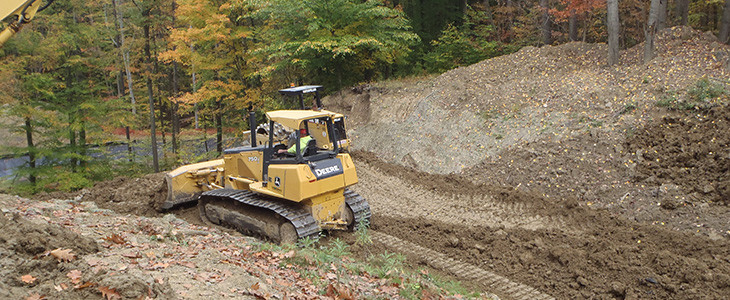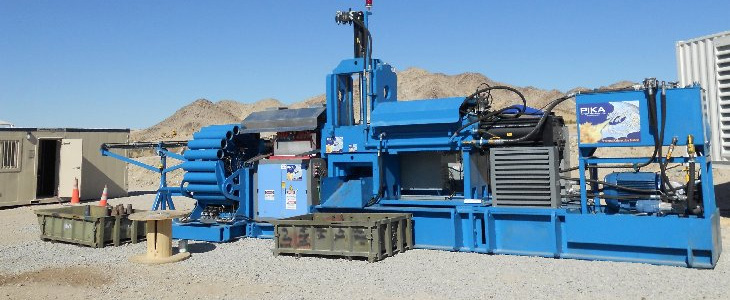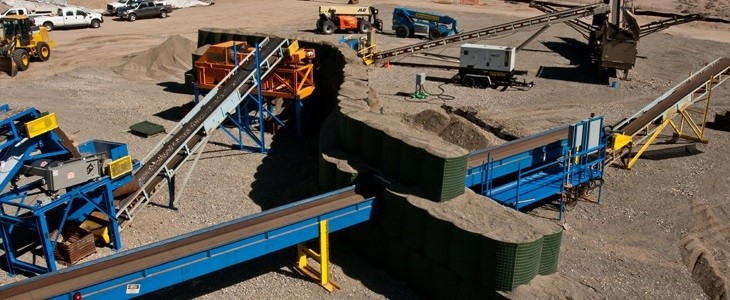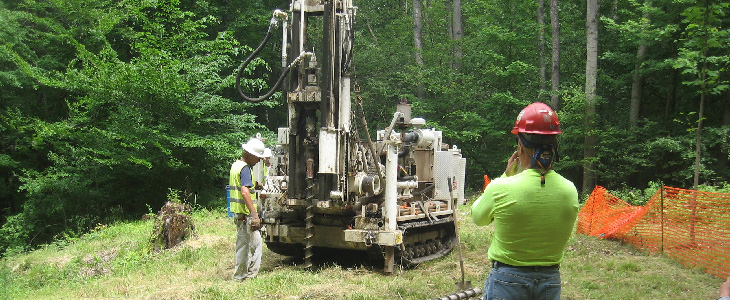Our utilization of stream diversion and channel restoration alleviated the immediate threat to human health and the environment.
Our client had a munitions debris dump area known as the Rocket Ridge Area (RRA) within Open Detonation Area #2 (ODA2) at the Ravenna Army Ammunition Plant (AAP). The RRA was a steep embankment along Sand Creek within ODA2 that was used for the disposal of munitions previously demilitarized within the ODA2 demolition area. The munitions and munitions debris dumped within the RRA included 75-millimeter and 105-millimeter projectiles, booster cups, three 500-pound bombs, fuzes, and burster tubes, as well as white phosphorous (WP) rifle grenades. Following demolition, the items were transported from the ODA2 demolition site and dumped at the top to the RRA slope. Later investigations proved that not all munitions in RRA had been completely demilitarized. In addition to the potential explosive hazard, there was great environmental concern as some of the munitions materials, including WP, had been deposited into Sand Creek due to high water events and natural gravitational migration down the steep slope.
We were first contracted to conduct a Phase I Time Critical Removal Action (TCRA) to quantify the explosives hazards present at the site. Upon quantifying the hazards, we then conducted the Phase II TCRA to remove all MEC, MD, and WP contamination identified at the site as quickly as possible in order to alleviate the immediate threat to human health and the environment. We employed innovative approaches to mitigate hazards, including stream diversion and stream channel restoration.
Prior to and during project operations, we performed specialized risk training with the client, site personnel, and project team to lessen any concern or distress the TCRA posed to the public. Our communications to the public were described and adhered to in the Public Involvement Plan we developed, and we continuously advised specified site and project personnel of the activities by faxes, public notices, and communications during the Restoration Advisory Board (RAB) meetings.
The ultimate outcome was a successful and safe mitigation and cleanup of a highly complex environmental concern and continuous communication throughout the process with and for our client.
For more information on our extensive work at Ravenna AAP, contact us.




